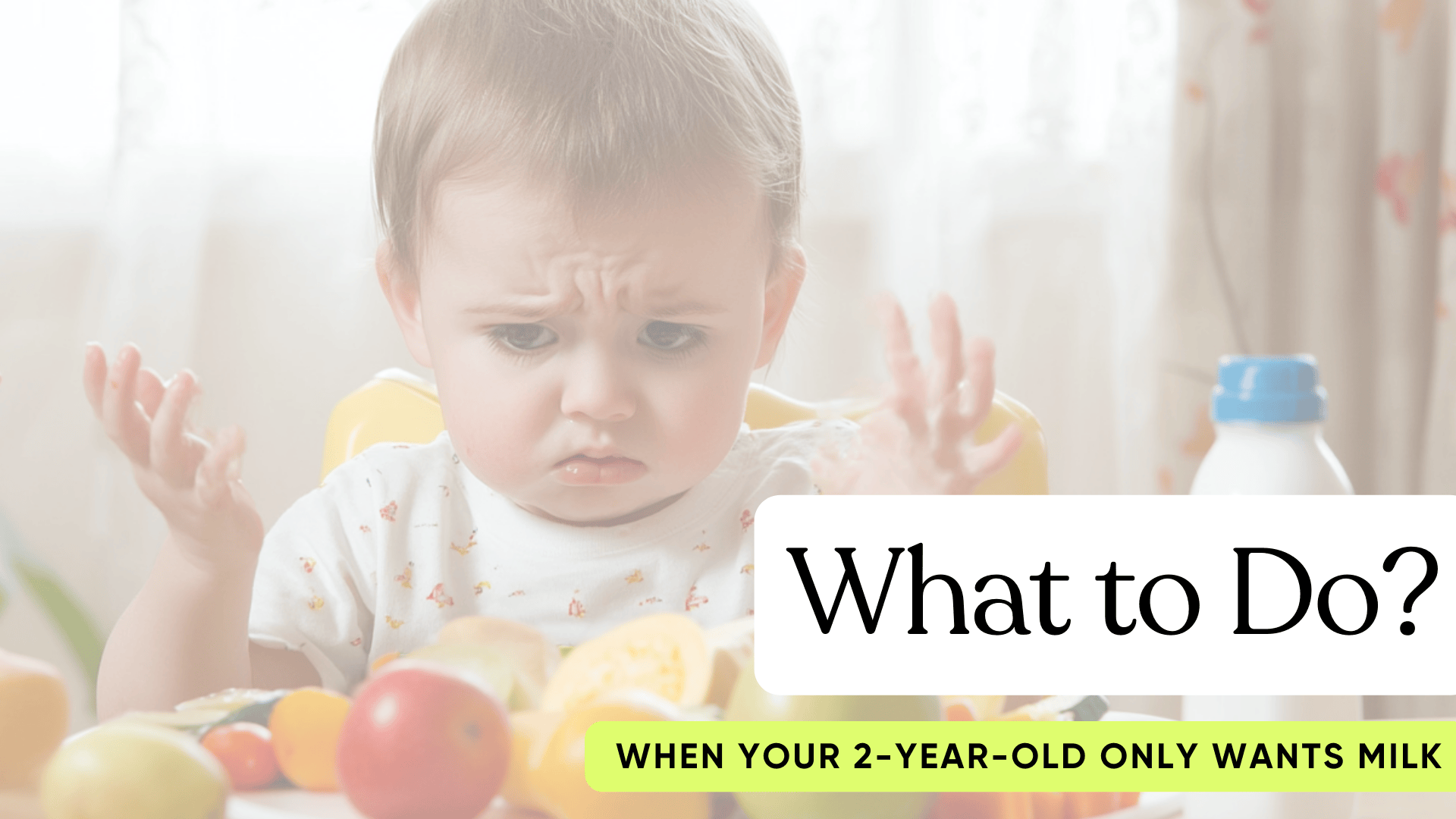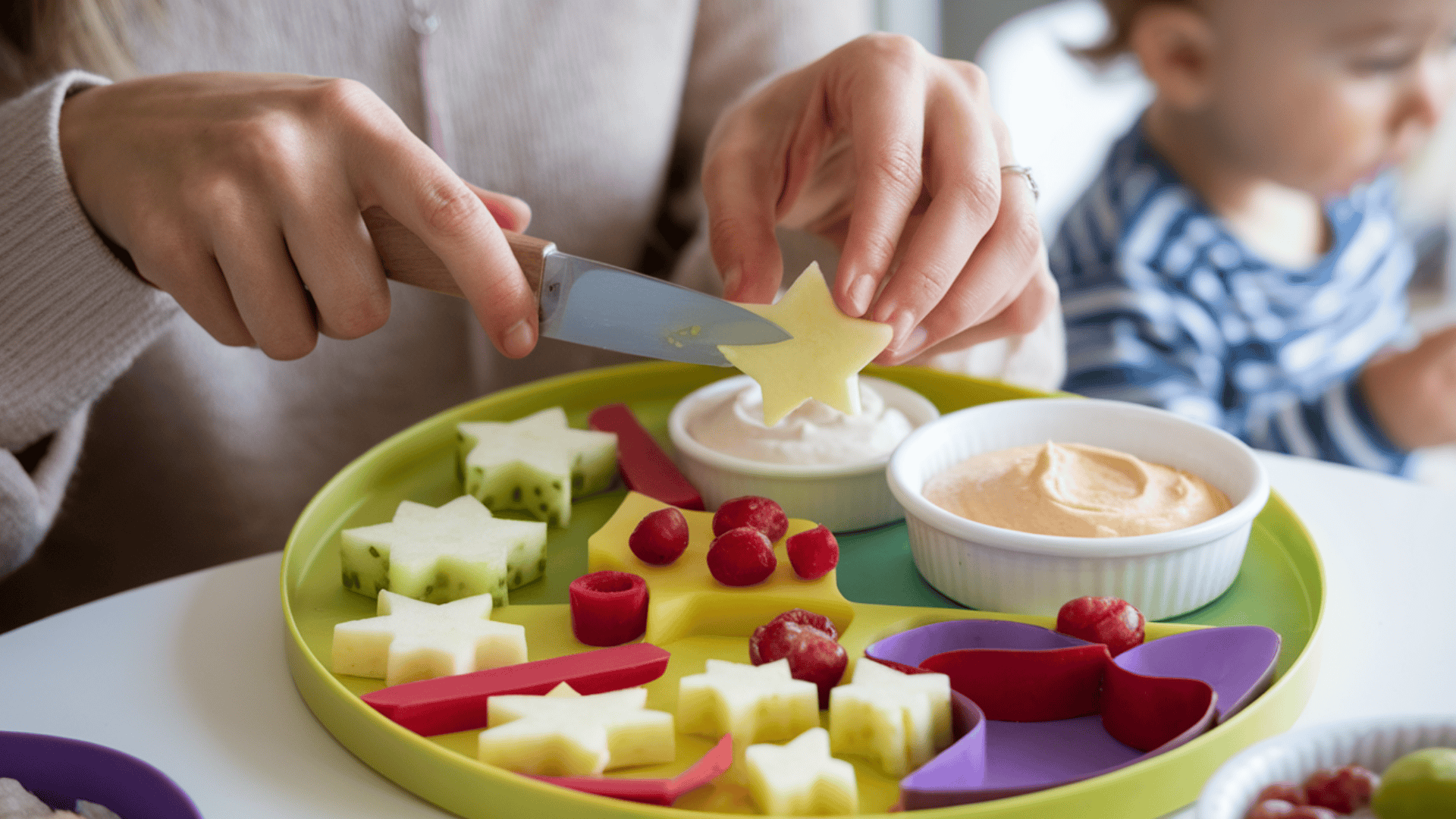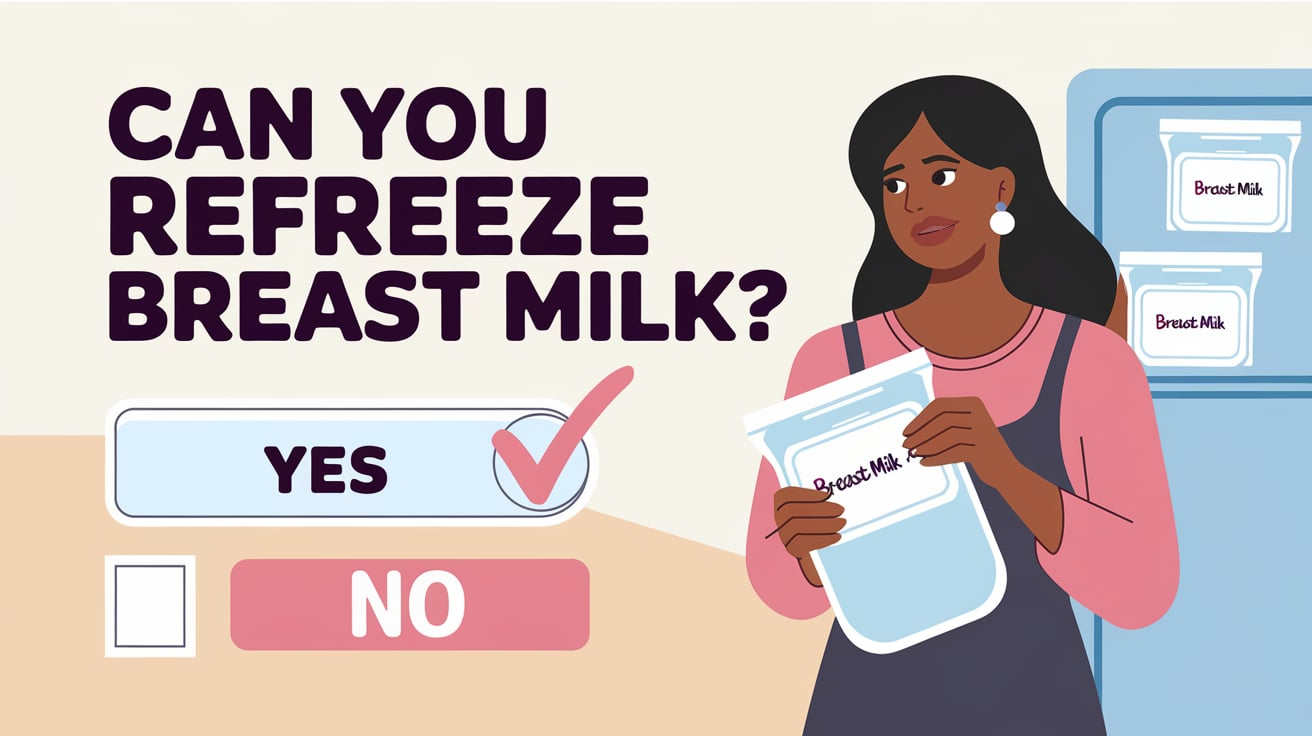
“No milk, no peace!” Does this sound like your toddler’s daily battle cry? You’re not alone in this struggle. Many parents find themselves negotiating with a determined 2-year-old who refuses anything that isn’t white and poured from a carton.
While it’s completely normal for toddlers to go through phases of food preferences, an all-milk diet can create nutritional gaps that affect their growth and development.
The good news? With a few smart strategies and a bit of patience, you can help your little milk enthusiast discover the wonderful world of food beyond the sippy cup. Let’s explore why this happens and what you can do about it.
Is it Okay if My 2-Year-Old Only Wants Milk?
The short answer? It’s common, but not ideal. While milk provides calcium and protein, drinking only milk can lead to nutrient imbalances, picky eating habits, and health issues like constipation or iron deficiency.
Your little one doesn’t need milk at every meal—balance and food variety are what matter most at this stage.
Toddlers often go through phases where they prefer familiar foods, and milk is both comforting and easy. But relying too heavily on milk means they miss out on other important nutrients found in fruits, vegetables, grains, and proteins.
How Much Milk Should a 2-Year-Old Have Per Day?

Pediatricians recommend about 16–20 oz (2–2.5 cups) per day, spread across 3–4 servings maximum. And that includes all dairy—milk, yogurt, and cheese count toward this total.
| Age | Calcium per Day (in milligrams) | Servings of Dairy per Day |
|---|---|---|
| 1 to 3 years (toddlers) | 700 mg | 2 to 3 servings |
| 4 to 8 years | 800 mg | 3 servings |
| 9 to 18 years | 1,300 mg | 4 servings |
| 19 and up | 1,000 mg | 3 to 4 servings |
Source: American Academy of Pediatrics
Why limit it? Because excess dairy crowds out other important nutrients your child needs. When their little tummy is filled with milk, there’s simply no room for iron-rich foods, fiber-filled fruits and vegetables, or healthy fats that support brain development.
What Happens if They Drink Too Much Milk?

When milk becomes the main course instead of a side dish, several problems can develop:
- Nutrient gaps start to appear, especially a lack of iron, fiber, and healthy fats. Constipation and stomach upset are common complaints when milk dominates the diet.
- There’s also an increased risk of iron deficiency, both because milk itself can interfere with iron absorption and because milk-filled tummies have no space for iron-rich foods.
- Plus, using milk as a meal replacement creates picky eating habits that can be tough to break later on. Your toddler might learn that if they refuse solid foods, they’ll get their preferred milk instead—a pattern that can persist well beyond the toddler years.
How to Gently Cut Back on Milk?

Ready to break the milk habit without causing meltdowns? Start by serving milk only at meals, not as a comfort between meals or at bedtime. This simple boundary helps your toddler learn that milk is food, not a constant companion.
Transition from Bottles to Cups
Once your child reaches 12 months, it’s important to start shifting from bottles to straws or open cups. This isn’t just about growing up—it supports proper oral development and dental health.
Don’t be surprised if you meet resistance. Many toddlers fight this change! Try offering new cups with favorite characters or letting your little one decorate their own special cup. Some parents find success with silicone straw cups as a gentle transition step.
Gradual exposure and modeling help tremendously. Let your child see you drinking from a cup and make a big deal about how grown-up they are when they use one, too. Persistence and patience pay off, though it may take weeks of consistent effort.
Healthy Non-Milk Alternatives for Nutrients
Expanding your toddler’s diet beyond milk means finding other sources for key nutrients:
- For calcium, look beyond the dairy aisle. While yogurt and cheese are obvious choices, tofu, leafy greens, beans, and fortified cereals also contribute to bone health. Nuts (ground or as smooth butter for safety) can be excellent additions, too.
- Healthy fats support brain development and can come from avocados, nut butter, eggs, and full-fat dairy products. These foods help your child feel satisfied while providing essential nutrients.
- Iron deficiency is a real concern for milk-loving toddlers, so prioritize iron-rich foods like meats, lentils, beans, spinach, and fortified grains. Serving these with vitamin C foods improves absorption.
- Don’t forget vitamin D, which works with calcium for bone development. While milk is often fortified with vitamin D, your pediatrician might recommend supplements, especially if milk intake is limited or you live in areas with less sunshine.
Reset Emotional Associations with Milk
For many toddlers, milk isn’t just food—it’s comfort in a cup. Slowly shift milk from a soothing object to part of the meal structure. This might mean replacing bedtime milk with extra cuddles, another book, or different calming routines.
If night-wakers ask for milk, gently reassure them and offer water instead. It may take a few rough nights, but most children adapt quickly when their parents remain consistent and loving.
What to Do if Your Toddler Refuses All Other Foods?

Don’t panic if your child seems to live on milk alone. Keep offering solid foods regularly, and avoid replacing missed meals with milk. This creates a powerful incentive to try other foods when hunger kicks in.
Get creative with presentations! Cut foods into fun shapes, offer dip options (most toddlers love to dip!), and include a variety of colors on the plate. Let them play or explore food without pressure actually to eat it. Sometimes, touching, smelling, and interacting with food is the first step toward tasting it.
Try gradually introducing new foods alongside familiar favorites. Don’t hide vegetables in other foods—this will prevent your child from learning what they’re eating. Instead, combine new and familiar items in ways that make exploration natural.
If eating is severely restricted (under 20 accepted foods or intense negative reactions to food), it’s time to consult a professional.
When to Seek an Advice?

While some pickiness is normal, certain situations warrant professional guidance. Seek help if your toddler:
- Consumes mostly or only milk consistently
- Refuses entire food groups
- Experiences weight loss, iron deficiency, or constipation
- Shows anxiety or emotional distress around mealtimes
Your pediatrician can assess whether your child’s milk obsession is causing nutritional concerns and might refer you to a pediatric dietitian or feeding therapist if needed.
Sometimes, what seems like simple pickiness can be sensory processing issues or other challenges that benefit from specialized support.
Final Thoughts
A toddler who only wants milk isn’t uncommon—but the key is gentle guidance back to variety. Rather than stressing over every refused bite, focus on structure, routine, and patience, not perfection. Remember that while milk is nourishing, it’s not a complete diet for growing bodies.
Take comfort in knowing you’re not alone on this journey. Countless parents have navigated these same challenges and found their way through.
With consistent boundaries, creative approaches, and plenty of patience, your milk-obsessed toddler will learn to eat (and maybe even love) real food again.
Trust the process—small steps forward, even with occasional steps back; all lead toward a healthier relationship with food that will benefit your child for years to come.















